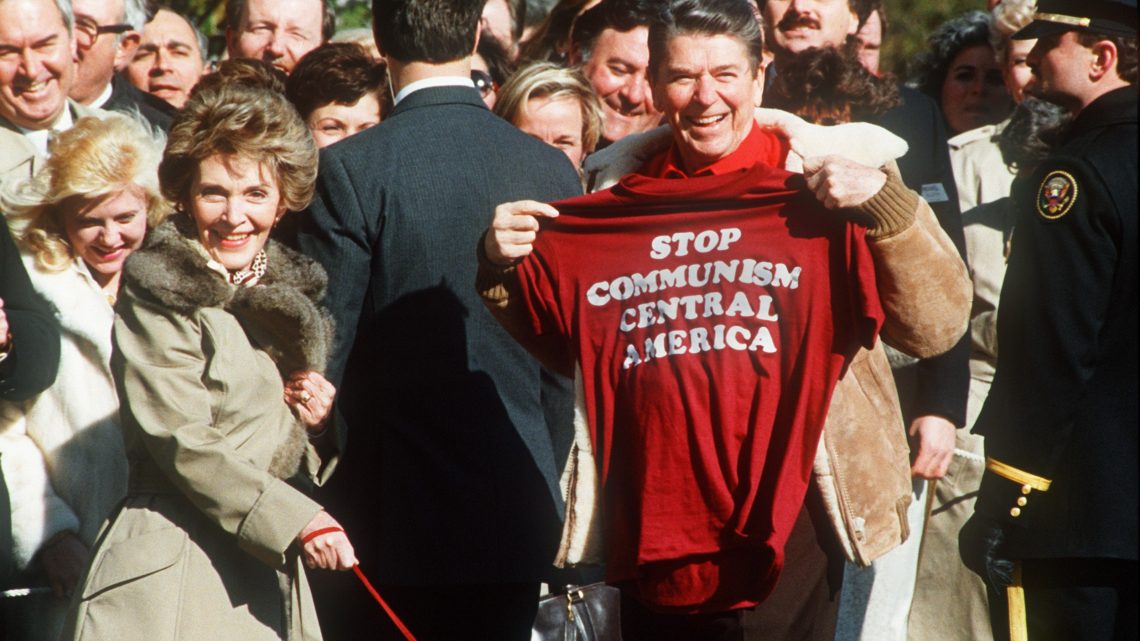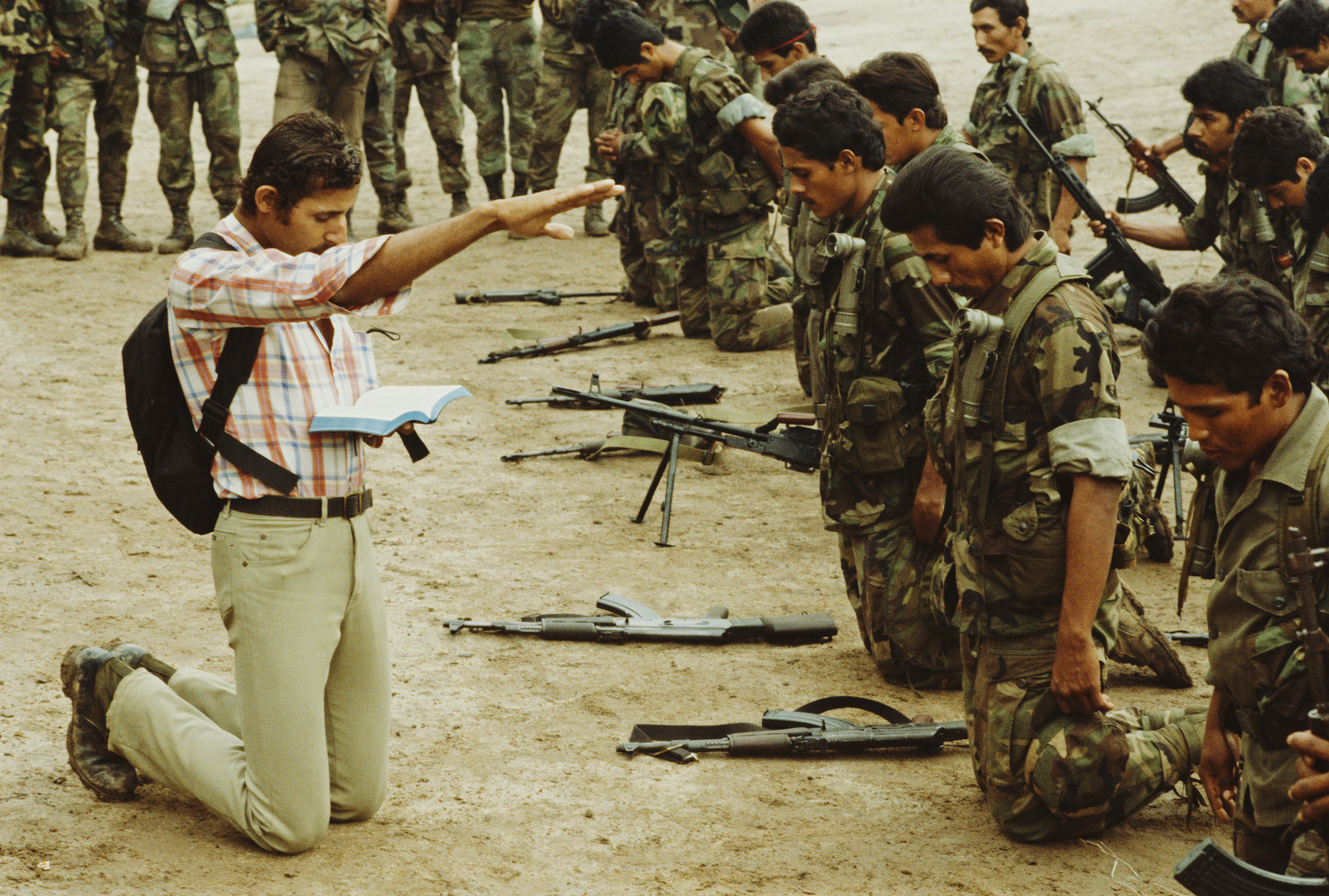
The Violence Central American Migrants Are Fleeing Was Stoked by the US
June 28, 2018As courts, law enforcement, and the Trump administration continue to sort out what to do with the steady stream of migrants either crossing the southern border illegally or seeking asylum, the roots of the current misery are often forgotten. The desperate border-crossers often come from Central America’s “Northern Triangle”—El Salvador, Guatemala, and Honduras—and are fleeing high homicide rates and violence in those countries. But this instability did not arise in a vacuum. Many historians and policy experts are quick to point out that much of the troubles in Central America were created or at least helped by the US’s interference in those countries going back decades. In other words, the foreign policy of the past has profoundly shaped the present immigration crisis.
“Hundreds of thousands of people were displaced in the 1980s,” said Elizabeth Oglesby, an associate professor of Latin American studies at the University of Arizona. “People were fleeing violence and massacres and political persecution that the United States was either funding directly or at the very minimum, covering up and excusing.” Violence today in those countries, she said, is a directly legacy of US involvement.
Oglesby spoke to me from Guatemala, which even today is still feeling the cumulative effects of US actions from over 50 years ago. In the 1950s, Guatemala attempted to end exploitative labor practices and give land to Mayan Indians in the highlands. The move, according to now-unclassified CIA documents, threatened US interests like the United Fruit Company, which controlled a good portion of land in Guatemala. But instead of citing economic factors, many in the US cried “communism,” saying the labor reforms were a threat to democracy. Wisconsin Senator Alexander Wiley, chair of the Foreign Relations Committee at the time, said he believed that a "Communist octopus" had used its tentacles to control events in Guatemala. In 1954, the CIA helped organize a military coup to overthrow Guatamala’s democratically elected government, and continued to train the Guatemalan military well into the 70s.
“The war in Guatemala was really a genocide,” Oglesby said, adding that an estimated 200,000 were killed in the subsequent 36-year-long civil war, which stretched from 1960 to 1996. “The history is important because it went so far beyond anti-communism—the purpose was to destroy people’s vision of the future. It had a terrible impact on the country, hundreds of thousands of people were displaced.”
In Nicaragua, El Salvador, and Honduras, there are similar stories. When, in the late 70s, the Nicaraguan resistance group called the Sandinistas overthrew the country’s dictatorship that had been in power for over 40 years, the US opposed the revolution, backed the dictatorship, and later supported the rebel group known as the Contras. In El Salvador, the US gave billions to the government to fight the socialist Farabundo Martí National Liberation Front (FMLN), and used Honduras as a base to hold military exercises.
“Under the umbrella of the Cold War, the US amplified its presence in the region, especially El Salvador, in order to defeat the guerrillas of the FMLN,” said Xochitl Sanchez of the Central American Resource Center (CARECEN) in Los Angeles. “The United States is complicit in creating the rampant and bloody gang violence, dire poverty, displacement and migration from El Salvador.” CARECEN was founded in 1983, as Central Americans were fleeing en masse to the US. “The need was astonishing,” said Sanchez.

Adding to the instability from the various civil wars the US was involved in throughout the region, Richard Nixon’s so-called “war on drugs,” beginning in 1971, pushed cartels from Colombia into an increasingly unstable and impoverished Central America. “The drug trafficking routes began to change, and that coincided with economic crises in the region and criminal networks that took up the trafficking that was displaced out of Colombia,” said Oglesby. She was quick to emphasize that while MS-13 garners most of the headlines today (and whose origins are in Los Angeles, not Central America), “a much deeper problem for Central America are government-linked organized crime networks that come directly out of the counterinsurgency experience of the 1980s.”
At the time, some refugees were granted asylum in the US, based in part on their perceived politics. “In Cold War politics, the Reagan administration was only too happy to declare Nicaragua unsafe,” said Charles Kamasaki, senior cabinet advisor for UNIDOS US, the nation’s largest Latino civil rights organization. “By contrast, something like 99 percent of Salvadoran applications for asylum were turned down for the reverse reasons. We were backing the right-wing juntas—we could not say from a foreign policy perspective that conditions were unsafe, and therefore declined virtually every political asylum case.”
Tightening of the border has, according to Oglesby, made coming to the US a significantly more perilous and expensive journey for Central Americans, but hasn’t slowed down migration. “The militarization of our border is actually leading to increased migration,” she said. In the 90s it wasn’t expensive to travel north with a local smuggler. “Now it costs $10,000 or $12,000 for someone from Central America to migrate—criminal networks control the routes through Mexico. So once they go, they stay, because they can no longer come back and forth. The only way for families to be reunited is for the families to also try to go.”
Following the administration’s recent announcement that domestic abuse and gang violence are no longer grounds for asylum, Oglesby is concerned that more people will be crossing through the desert instead of turning themselves in legally at the border. “Meaning more deaths in the desert,” she said. “They also will be more inclined to cross using criminal networks. I feel that criminalizing the asylum process is going to strengthen the criminal networks that control the routes.”
Immigration and civil rights advocates told me it’s impossible to look at domestic immigration policy without examining the foreign policy roots of the current crisis. “The US has a moral and social responsibility to this population of immigrants as they are complicit in the creation of the conditions of forced migration from the country,” said Sanchez.
While UNIDOS US doesn’t take official positions on foreign policy, Kamasaki told me that in his view, the US does bear responsibility for its role in the circumstances that cause people to leave their home countries. “For those who felt strongly that we should intervene in Central America, whether it was to fight communism, or to maintain good conditions for business so American consumers could enjoy cheap bananas or Nicaraguan coffee, I would argue that responsibility’s a two-way street. If we enjoy benefits, then that brings with it some obligations."
“I get asked all the time, Why can’t Central Americans just stay in their country and strive for better?” Oglesby told me. “I want people to understand, Central Americans have been trying to do that for decades, and the United States put itself on the wrong side of those struggles, and now we are reaping the consequences.”
Sign up for our newsletter to get the best of VICE delivered to your inbox daily.
Cole Kazdin is a writer living in Los Angeles.


